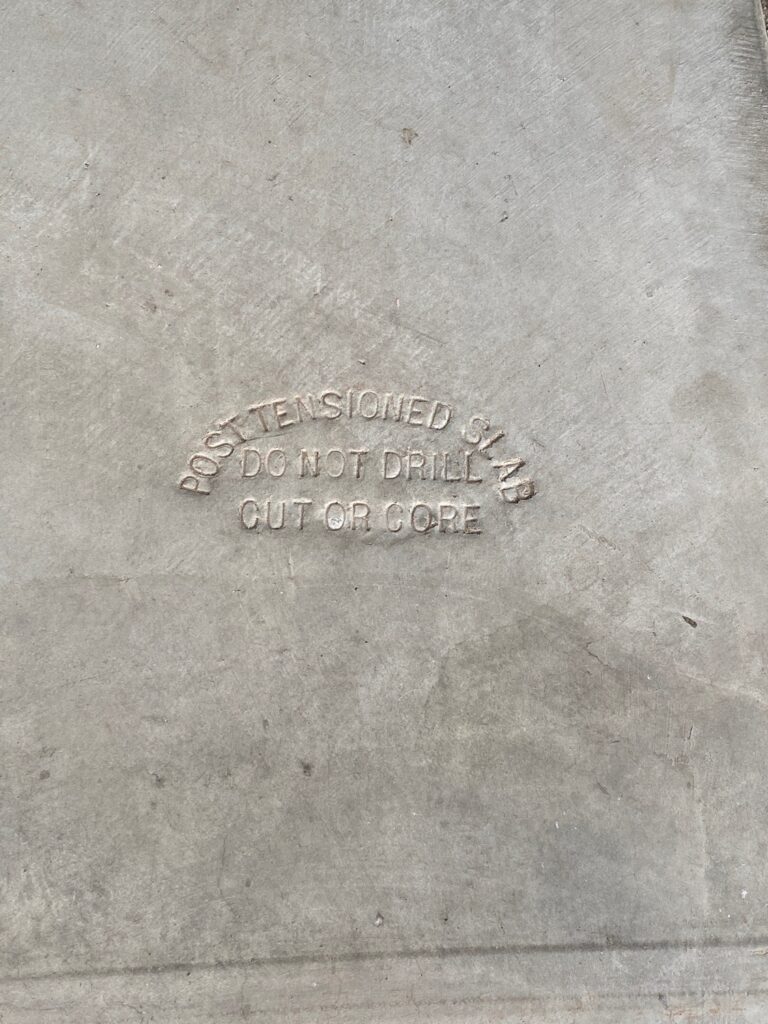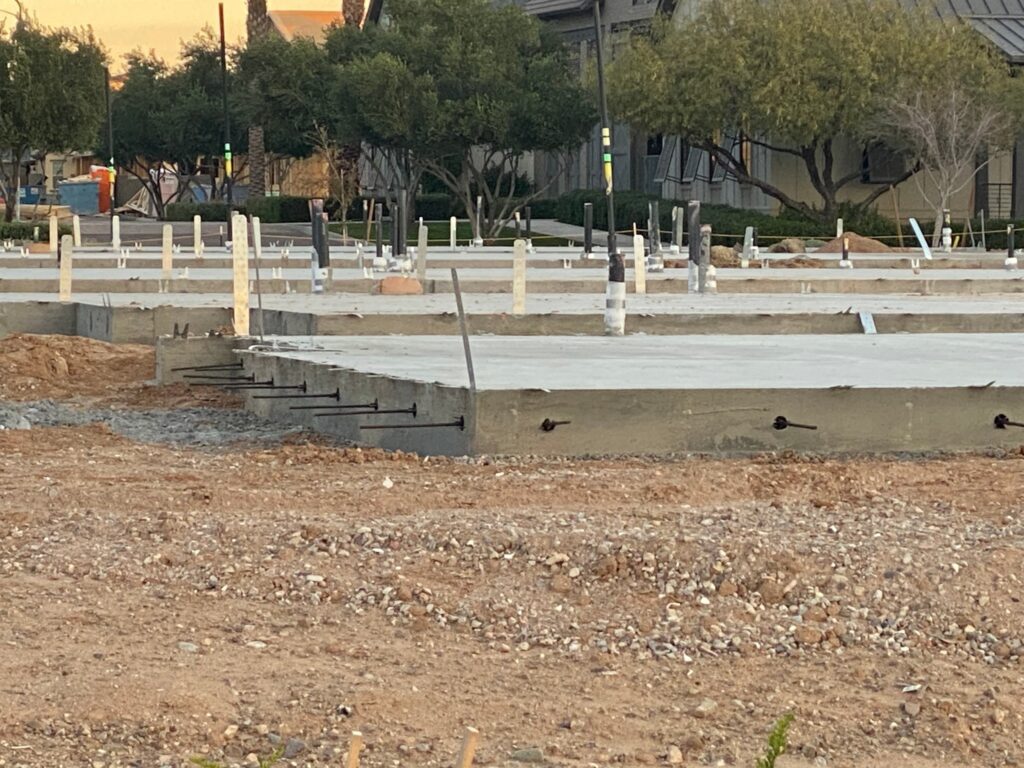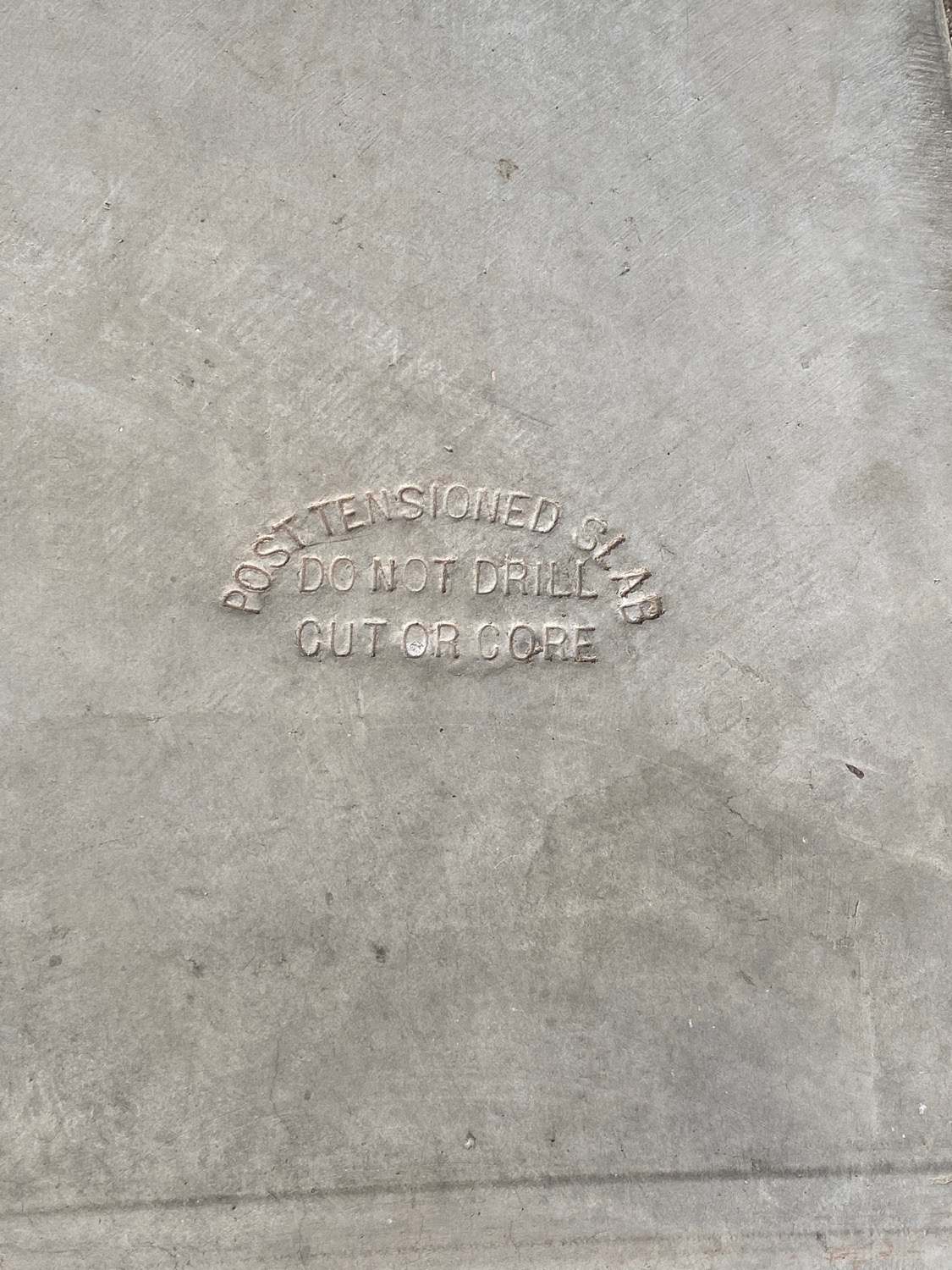Home inspections in Phoenix and Arizona as well as most communities around the country, home inspectors are required by their standards of practice to identify the type, material, and true condition of the foundation of your property. This can sometimes be tedious when it is all in a crawl space or even inaccessible in some cases. Nevertheless it is something that should be done.
When identifying foundations, some are very obvious. The post-tension slab is just that. This is a slab foundation that became popular in the mid 90’s and is easily identified by a stamp that is usually placed into the concrete surface of the garage or patio area so it is visible. The stamp reads “POST TENSION SLAB-DO NOT CUT CORE OR DRILL”

These post tension slabs are actually thicker than the other slab types. A monolithic slab includes a footing, stem wall, and floor that are all tied together with structural steel and poured all at the same time. The independent slab, includes the same components, but they are all poured individually. Monolithic slabs and independent slabs allow for more movement and are more prone to cracks than the post tension slab.

The cables in a post tension slab are roughly 3 Ft. apart. After this slab is placed and appropriately hardened, tension is then applied to the cables. This basically squeezes this slab together. This also allows less overall movement of the slab, and ultimately the structure that is built here has less overall movement. This keeps slab or foundation cracking, and settlement cracking in walls and ceilings to a minimum as well. The post tension foundation and structure that is built on top of it mover more as one unit rather than independent units moving at different rates independently.
Each type of foundation has it’s good and bad, and it is important to have a home inspector to properly identify your foundation to determine it’s true condition at the time that it is being inspected. If any issues are seen, it is typical for a home inspector to recommend that it be further evaluated by a contractor that specializes in foundations. They can always give more detailed information about repairs or costs that may be needed currently or in the future.

